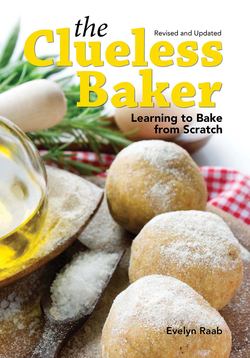Читать книгу The Clueless Baker - Evelyn Raab - Страница 48
ОглавлениеKneading Dough
Okay, you’ve mixed up the dough — so far, so good. Now you have to knead it. Right. Like what’s that supposed to mean? Relax — it’s fun.
First — a little background. When you look closely at a slice of bread, you’ll notice that it consists of a bunch of bubbles in a fibrous framework. The fiber is called gluten — a stretchy protein that occurs in many grains, including wheat (from which most bread is made). Without gluten, the little bubbles that give bread its soft and spongy texture would have nothing to hold them together. The bread would have no structure and turn out dense and flat — and not in a good way either. Probably not what you had in mind.
But gluten doesn’t just happen. You have to develop it. That’s where kneading comes in. When you work dough by hand (or with a mixer or other machine), you encourage the strands of gluten to become long and elastic so that they can contain the bubbles of carbon dioxide that the yeast exhales as it grows and so that your bread can rise beautifully.
The beginner’s method
Dust your work surface liberally with flour. Dump the dough onto this floured surface and dust the top with more flour. Press down on the dough, flattening it out in a pizza shape about 1 inch (2 cm) in thickness. Fold it into quarters. Flatten again as before. Fold again. Continue to flatten and fold, dusting the dough with as much flour as is necessary to keep the dough from sticking to the table or your hands. Keep going. Don’t stop. Flatten, fold, flatten, fold, dust, and so on. Eventually the dough will become smooth and elastic and will no longer stick to the table or your hands. Keep kneading a little longer. When the dough feels very much like your earlobe (pinch it to find out), it’s ready. There. Now, wasn’t that fun?
Advanced transcendental kneading
After you’ve gained some bread-baking experience, you’ll become so good at kneading that you’ll no longer have to consciously flatten the dough and fold it into quarters. Instead, you’ll use the heel of one hand to press down on the dough while turning it over with the other. It becomes rhythmic. Hypnotic. Transcendental. You become one with the dough as the squishy lump absorbs all your frustration and stress. You achieve inner peace. At the same time, you have made bread. I mean, is that perfect or what?
